Single-cell profiling of the antigen-specific response to BNT162b2 SARS-CoV-2 RNA vaccine
- PMID: 35710908
- PMCID: PMC9201272
- DOI: 10.1038/s41467-022-31142-5
Single-cell profiling of the antigen-specific response to BNT162b2 SARS-CoV-2 RNA vaccine
Abstract
RNA-based vaccines against SARS-CoV-2 have proven critical to limiting COVID-19 disease severity and spread. Cellular mechanisms driving antigen-specific responses to these vaccines, however, remain uncertain. Here we identify and characterize antigen-specific cells and antibody responses to the RNA vaccine BNT162b2 using multiple single-cell technologies for in depth analysis of longitudinal samples from a cohort of healthy participants. Mass cytometry and unbiased machine learning pinpoint an expanding, population of antigen-specific memory CD4+ and CD8+ T cells with characteristics of follicular or peripheral helper cells. B cell receptor sequencing suggest progression from IgM, with apparent cross-reactivity to endemic coronaviruses, to SARS-CoV-2-specific IgA and IgG memory B cells and plasmablasts. Responding lymphocyte populations correlate with eventual SARS-CoV-2 IgG, and a participant lacking these cell populations failed to sustain SARS-CoV-2-specific antibodies and experienced breakthrough infection. These integrated proteomic and genomic platforms identify an antigen-specific cellular basis of RNA vaccine-based immunity.
© 2022. The Author(s).
Conflict of interest statement
E.M.W. receives research funding from Boehringer-Ingelheim and is a member of their myositis ILD advisory board. A.R.S. and I.S.G. are co-founders of AbSeek Bio. R.H.C. is an inventor on patents related to other SARS-CoV-2 antibodies. J.E.C. has served as a consultant for Luna Biologics, is a member of the Scientific Advisory Boards of CompuVax and Meissa Vaccines and is Founder of IDBiologics. J.E.C. has received sponsored research agreements from Takeda Vaccines, IDBiologics and AstraZeneca. J.M.I. was a co-founder and a board member of Cytobank Inc. and has engaged in sponsored research with Incyte Corp, Janssen, Pharmacyclics. J.C.R. is a founder, scientific advisory board member, and stockholder of Sitryx Therapeutics, a scientific advisory board member and stockholder of Caribou Biosciences, a member of the scientific advisory board of Nirogy Therapeutics, has consulted for Merck, Pfizer, and Mitobridge within the past three years, and has received research support from Incyte Corp., Calithera Biosciences, and Tempest Therapeutics. No other author declares any competing interests.
Figures

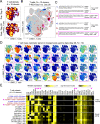
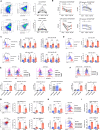
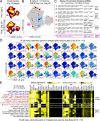
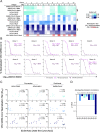
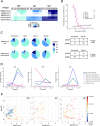
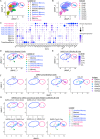
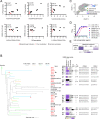
Update of
-
Single-Cell Profiling of the Antigen-Specific Response to BNT162b2 SARS-CoV-2 RNA Vaccine.bioRxiv [Preprint]. 2021 Jul 28:2021.07.28.453981. doi: 10.1101/2021.07.28.453981. bioRxiv. 2021. Update in: Nat Commun. 2022 Jun 16;13(1):3466. doi: 10.1038/s41467-022-31142-5. PMID: 34341788 Free PMC article. Updated. Preprint.
References
Publication types
MeSH terms
Substances
Grants and funding
- 75N93019C00074/AI/NIAID NIH HHS/United States
- U01 AI125056/AI/NIAID NIH HHS/United States
- R01 AI157155/AI/NIAID NIH HHS/United States
- R01 AI153167/AI/NIAID NIH HHS/United States
- R01 AI131722/AI/NIAID NIH HHS/United States
- R01 DK105550/DK/NIDDK NIH HHS/United States
- T32 DK101003/DK/NIDDK NIH HHS/United States
- R01 CA217987/CA/NCI NIH HHS/United States
- T32 GM008320/GM/NIGMS NIH HHS/United States
- UL1 TR000445/TR/NCATS NIH HHS/United States
- U54 CA217450/CA/NCI NIH HHS/United States
- KL2 TR002245/TR/NCATS NIH HHS/United States
- R01 CA226833/CA/NCI NIH HHS/United States
- P30 CA068485/CA/NCI NIH HHS/United States
- K12 HD043483/HD/NICHD NIH HHS/United States
LinkOut - more resources
Full Text Sources
Medical
Research Materials
Miscellaneous

